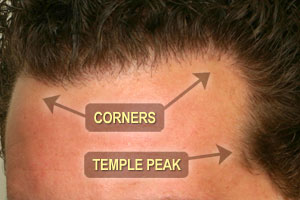I have a few questions about ACell…first of I know it’s in early stages and a lot needs to be done but it it works I want to know this…
- From my understanding it will involve plucking hairs from the donor hair putting into the top and then wait a few months for new hairs to sprout from the plucked areas to keep transplanting?
- If that is the case how is not a cure where you once said somewhere? If plucking out hairs and they keep regrowing won’t you have an unlimited donor supply!?

Yes, the hair is plucked from a donor area and placed in a bald area. It is not a cure, because you are still genetically bald. You just added hair to look non-bald. If that was the definition of cure, then Propecia and hair transplant surgery could be considered a cure. If you are referring to the “theoretical” unlimited donor hair supply as a cure, then I suppose that would fit. But theory and practicality (of multiple surgeries) does not always work out in the real world.
There are a lot of unanswered questions here. I do not have all the answers, and the proliferation of information on the Internet makes it difficult to keep ahead. In other words, we are BEGINNING our clinical study. We can all speculate what the study will show, but as far as we are concerned, it is all hopes and dreams at this point. We promise we will keep you all up to date.

 Thank you for your support! I don’t mind the large amount of emails I’ve received with ACell questions, as I kind of expected that… but I don’t want to give anyone the wrong idea about what it can do (we’re still trying to figure it all out).
Thank you for your support! I don’t mind the large amount of emails I’ve received with ACell questions, as I kind of expected that… but I don’t want to give anyone the wrong idea about what it can do (we’re still trying to figure it all out).
 In general, thinning hair in the front and crown sounds like male pattern baldness. I am confused by your description of the temples and wonder if the area you’re referencing is actually the corners of the frontal hairline, which is commonly confused terminology. See the photo at right for clarification.
In general, thinning hair in the front and crown sounds like male pattern baldness. I am confused by your description of the temples and wonder if the area you’re referencing is actually the corners of the frontal hairline, which is commonly confused terminology. See the photo at right for clarification.